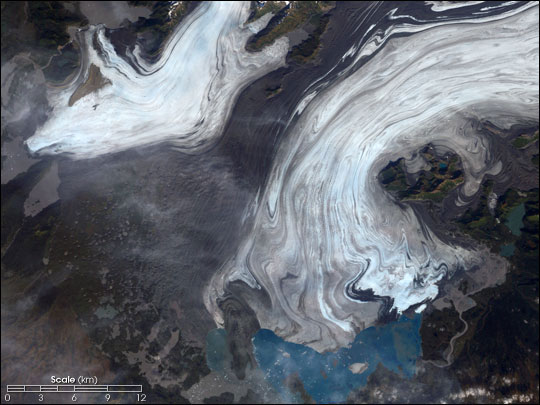
What's Happening to Alaska's Glaciers?

The giant and majestic glaciers of Alaska have long puzzled the scientists that study how they change over time.
Around three decades ago, glaciers in the northernmost state were identified as important players in determining global sea level , but figuring out whether or not they're losing ice overall, and which glaciers are seeing more melt, has been difficult.
New measurement technologies are clearing up the picture, which seems to be one of increased melt , but more work needs to be done to better understand the behavior of the frozen behemoths.
Glacier variety
The difficulty in determining what's going on with Alaska's glaciers comes in part because they're a varied bunch.
"Alaska has quite a lot of different types of glaciers that it's hard to choose one that is representative," Anthony Arendt, who wrote an article in the journal Science this week about Alaskan glaciers, told OurAmazingPlanet. "You don't get such a variety in other places."
Arendt says that while Alaska's glaciers are losing mass overall, it's vital to take multiple measurements of the same glacier, as some are changing in complex ways.
Sign up for the Live Science daily newsletter now
Get the world’s most fascinating discoveries delivered straight to your inbox.
In the past, all measurements were done by observation climbing out on the glacier and putting poles or digging pits, then returning and assessing how the ice surface changed relative to those markers. Not only was this process arduous, but it also limited the number of glaciers that could be studied.
"Field observations are challenging to do twice a year, and we're restricted to glaciers that are safe," Arendt said.
New technologies
Around two decades ago, a team at the University of Alaska began to fly aircraft equipped with GPS and LIDAR (a technology that sends out laser pulses) down the center of a hundred glaciers, comparing their current elevation with earlier measurements. Measuring with aircraft had big advantages, as well as some drawbacks.
"Aircraft may tell a lot of information about large areas, but the challenge came in determining how these observations translate to changes in global sea level," Arendt said.
In 2003, NASA and the German Aerospace Center launched a project called GRACE, the Gravity Recovery and Climate Experiment. GRACE uses two satellites to provide a direct measure of variations in Earth's mass, which can tell much more quickly how Alaskan glaciers change from year to year. The data from GRACE shows that glaciers are losing mass more rapidly than in previous decades.
Arendt says that more work combining all of these various methods is needed. "We have some really remarkable new technologies, but one of the surprising things we have learned from remote measurements is just how complex these systems are," said. "We need to study individual glaciers and how they're changing, and also to combine techniques and collaborate with other research groups."
Getting an accurate picture of Alaska's ice masses can be a tough job, but someone's got to do it.









